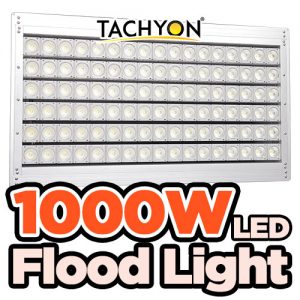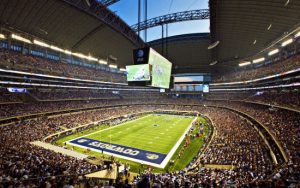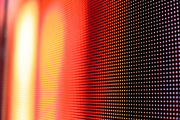1. LED Lighting Route Analysis
The design of the lighting fixture is based on the three-way combination of the LED light-emitting part, the drive control part and the optical heat dissipation structure design.
(1) Light-emitting part
With the continuous improvement of the luminous efficiency of LED light-emitting chips, the controversy over the inability of LEDs to save energy gradually fades away. In the next few years, there will be further improvements, which will lay a solid foundation for accelerating the application of LEDs. The luminaire design will be simplified, and the packaging method will change according to the luminaire application.
For a long time, the packaging design has been developed in accordance with LED heat dissipation. With the understanding of LED packaging heat dissipation, more suitable packaging forms for special lamps will be born one after another.
LED epitaxy upstream investment has increased, competition has intensified, and downstream applications have not yet emerged, which will inevitably lead to a substantial drop in the price of LED chips. The cost of packaging has been reduced much faster than the cost of some LEDs is already lower than the cost of packaging. Therefore, packaging technology innovation is also one of the most important parts of LED development.
(2) Drive control
The improvement of drive conversion efficiency is one of the most effective solutions. Improving the power conversion efficiency can reduce the power of the whole lamp, improve the efficiency of the whole lamp, and save the cost of heat dissipation design. There are no regulatory requirements for switching power supplies before power factor requirements, but countries already have rigid indicators for LED lamps. The improvement of reliability and lifespan is also an important part of the current. There are also aspects of future demand for color temperature, brightness, and intelligence.
(3) Optical design and heat sink
Humanized optical design. Lamp design has developed rapidly in recent times, but it’s time to start along the alternative route. In the future, LED will develop lighting products more suitable for LED itself, the heat dissipation structure tends to be reasonable, and the more standardized module light source shows the advantages. New material heat dissipation technologies are introduced one after another, and the cost will be further reduced.
(4) Design of driving power supply
We have a better understanding of power-driven design. Find breakthroughs here and focus on analyzing and formulating future developments. We need to develop some new driving methods to completely eliminate electronic transformers, inductors and electrolytic capacitors, and to truly improve the life of lamps. The special feature is the lamps with built-in power supply, and the internal components are up to hundreds of degrees Celsius, including electrolytic capacitors, magnetic materials and enameled wires, which are all threatened by short life.
The analysis believes that only by eliminating short-lived devices can the indicators of LED lamps be comprehensively improved. Cancellation of inductors, electronic transformers, electrolytic capacitors, and completely solve the problem of life and volume. Improve power drive efficiency, reduce heat source and prolong lamp life. Knowing that only innovative technology can make itself leapfrog development. In the evolution of LED technology, only independent innovation and more intellectual property rights can pave the way for subsequent LED development.
The cancellation of the power supply cannot be understood as the need for driving, let alone no electricity, but the cancellation of some devices in the power supply that hinder the life. This is a brand-new LED driving method named “de-power technology”.
2. High Voltage Nominal Value LED Design
High Voltage LED
The development of “de-power design” requires the development of high-voltage LEDs. Multiple LEDs connected in series can be referred to as high voltage LEDs. The serial connection methods include photolithography technology, flip-chip connection, COB gold wire connection, PCB single particle welding, etc. We appreciate flip-chip technology, and it will take time to get a price that the market can accept. When the COB gold wire is connected, if the quantity is too large, the quality is difficult to guarantee. The efficiency of gold wire absorbing blue light will be reduced, and the price of gold will be high. Therefore, COB gold wire connection can only be used as a segmented market application, and the scale of popularization is limited.
The current design lamps and lanterns mostly use single-particle low-voltage LEDs, which is the main reason why the design lamps need power conversion. To get the best drive efficiency, the best way is to make the LED voltage closer to the drive voltage value. In this way, power conversion is no longer required, and the simplified circuit structure of the constant current source can complete the driving task.
Characteristics of high voltage LEDs
LEDs have the same characteristic as incandescent lamps. Incandescent lamps use tungsten filaments to emit light, which can be adapted to 1.5 – 380V voltage. The LEDs can also be connected in series in a large number to obtain different high voltage values. It can be seen that the nominal value voltage is the guiding standard for the development of high-voltage LEDs. In fact, AC LEDs and high-voltage LEDs are also realized by photolithography. It is precisely because of the deviation from the nominal value guide that the correct market positioning has not been found.
Need to develop several nominal voltages? The mains voltages of various countries are 110V and 220V, and the same power light source can be obtained in series and parallel under the same power. To this end, a concentrated development of a 110V-LEDs can meet the lighting needs. In the low-voltage power supply part, the switching power supply has long formed nominal voltages of 12V, 24V, 36V, and 48V. The car is 12V or 24V voltage, and both wind and solar energy need lead-acid batteries for energy storage, which need to be 12V and 24V. For this reason, 12V-LED design should be considered, because 24V, 36V, and 48V are all multiples of 12V. Under normal circumstances, LEDs are connected in series, which can flexibly design products.
High voltage LEDs can eliminate the need for supply voltage conversion in our designs. Or follow the traditional mature switching power supply, no need to develop a new power supply system. At the same time, new power supply designs are welcome to support LEDs, but we need to be able to ensure the life of our designed lamps and improve the reliability of LED products based on the verified power supply.
3. De-power Design Scheme
The low-voltage LED drive power supply is the product transplanted from the primary side feedback circuit of the switching power supply. The design circuit is complex, and the constant current accuracy error is large. The drive efficiency of the low-power switching power supply drive mode is designed to be 80% at best. LED applications begin to require power factor, which low-power power supplies do not have. The device lifetime is limited and the built-in power supply volume is also limited, thus limiting market opportunities. High-voltage LED is a product born because of the above problems. It combines the advantages of AC LED and low-voltage LED. The driving efficiency and constant current accuracy are greatly improved. All parameters are excellent, and the performance price ratio is high.
De-power design method (1)
There are two ways of de-powering design currently introduced, among which way (1) is:
The power conversion circuit part is completely cancelled, the simplest rectifier bridge and a capacitor are composed, the driving constant current protection circuit is integrated with the light source, and the light source part is integrated in a high-voltage LED package. There is also an electrolytic capacitor, and the use of electrolytic capacitors is not prohibited in the certification of various countries. It seems that many places cannot do without it. The existence of electrolytic capacitors improves many indicators and also simplifies the drive circuit.
De-power design method (2):
This current supports all-round thyristor dimming, and electrolytic capacitors have also been eliminated. In theory, all the devices that affect the lifespan are cancelled, and the driving efficiency is slightly lower than that of the first method. The 75% efficiency is equivalent to that of the low-power switching power supply, but the reliability is greatly improved. LEDs are segmented applications in combination with multiple high voltage LEDs.
All lamps and lanterns can be applied to de-power design, depending on whether the market is worth directional investment. At a certain scale, the advantages and costs of de-powering design performance are absolutely competitive. In today’s era of constant changes that cannot withstand costs, de-powering will definitely occupy 80% of the mainstream market in the future. De-power design is a technology-intensive project with a long design front and comprehensive technical coordination ability to complete the design perfectly. In addition, multiple links are innovated, and test equipment also needs to develop cross-industry integration to test the cohesion of the overall design team.
4. Lighting Design Development Ideas
Design the light source according to the lighting product. Our light sources are based on light source lighting and heat dissipation considerations, and we do not know the needs of lamps and lanterns predictably. The lighting company designs the optical heat dissipation structure of the lighting according to the established light source. Most companies keep up with front-line development and follow up when there is demand in the market. Active research and development of light sources is relatively small, packaging is in a passive situation, and lamp design is limited. A qualitative batch luminaire needs a light source that is more in line with this luminaire.
According to the power development drive mode, there are many kinds of drive modes, but it still has its limitations. The power of a single light source of LED lamps is mainly concentrated within 20W, which is the weakest part of the switching power supply. LED applications above 20W account for less than 30%, and most of them use modular design, combining design of high-wattage lamps. Therefore, the LED driver design can be concentrated within 20W.
According to the comprehensive consideration of the circuit structure of lamps and lanterns, the de-power design is suitable for a large number of lighting products, and the advantages can be shown only after comprehensive consideration.






